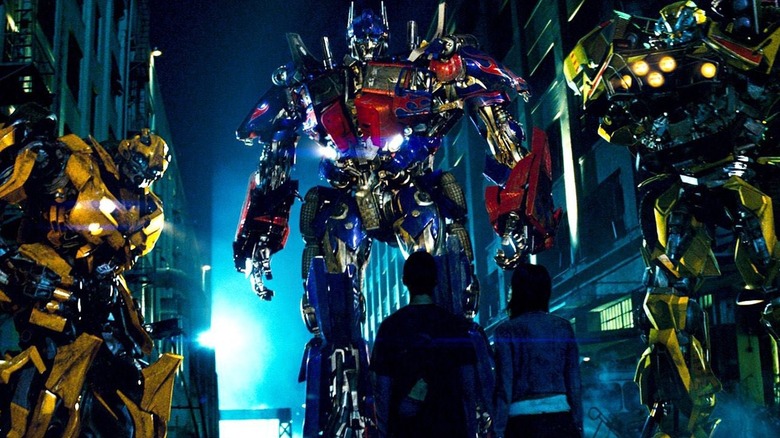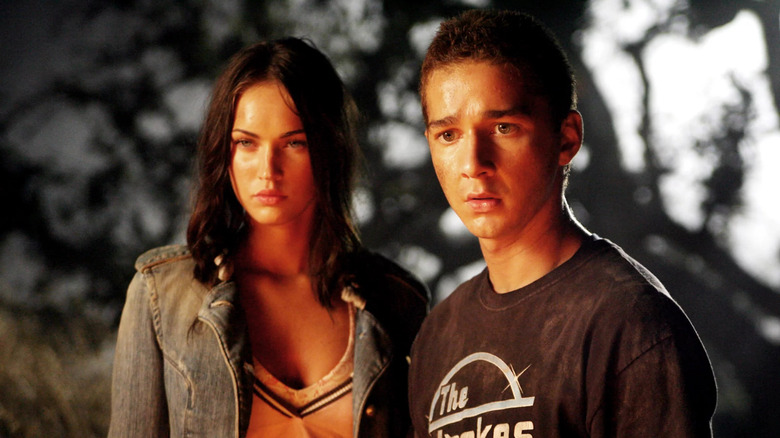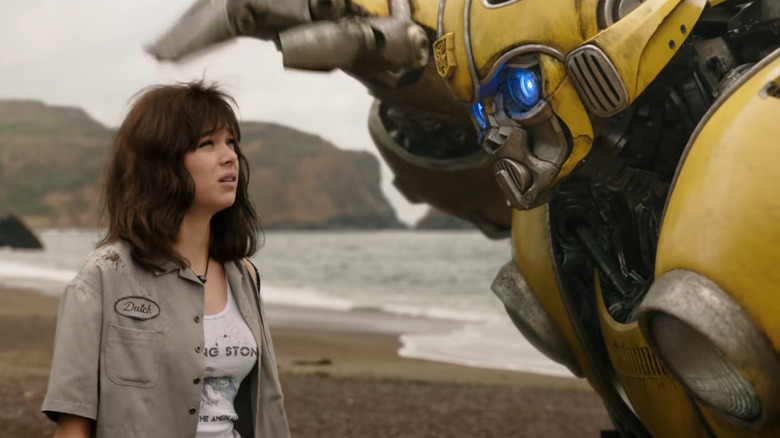The First Draft Of Transformers Barely Contained Any Actual Transformers
For good or ill, "Transformers" broke new ground in creating photorealistic computer-generated characters and, in turn, splicing them into live-action footage. It's hard to imagine "The Avengers" in a world where the Autobots and Decepticons don't battle it out in the so-called Mission City. However, working in uncharted waters always leads to challenges in conceptualization.
"Transformers" screenwriter Roberto Orci spoke to IGN after the movie's release. It was "very hard" for him and co-writer Alex Kurtzman to merge the human and robot stories. I can understand their caution; before writing any scenes with the robots, they probably had to consider if the animators would even be able to pull them off. Accordingly, the first draft didn't have many Transformers at all; producer Steven Spielberg pitched the story as "a boy and his car," so that's what Orci and Kurtzman initially wrote.
"The first draft was almost exclusively just Shia [LeBeouf] and Megan [Fox] — that was basically what the entirety of the movie was: a kid realistically is trying to get his first car, and then it turns out to be this thing. He's going to have parents because he's that age [...] we looked at it as a byproduct of being in a realistic situation. My parents have knocked on the door when it's locked, your parents knocked on the door when it's locked. So we've all been there, or got our first license, etc. "
Orci explained that with the "spine of the story" written, the second draft of "Transformers" is when he and Kurtzman "opened up the world." I understand this approach, but think it's worth unpacking the implications of Sam Witwicky (LaBeouf's character) being deemed the "spine of the story."
Who are the leads?
The "Transformers" movies, at least the first batch, don't really see the titular characters as, well, characters. No, they're just talking props to facilitate the action and product placement for General Motors. Only Optimus Prime (Peter Cullen) and Bumblebee are ever afforded more than five minutes of screentime and a hint of personality.
Tellingly, the Transformers originally weren't going to speak at all in the 2007 movie. Orci and Kurtzman nixed that idea but its presence is still felt; Bumblebee "talks" via edited radio transmissions while the Decepticons mostly communicate with an unintelligible alien language.
In the first film, dividing the focus like this does make some sense; the story was an introduction to an alien world. Keeping "Transformers" grounded in the familiar and offering audiences only a taste was the natural way to go. However, the sequels never changed gears. 2009's "Revenge of the Fallen" again makes Sam's coming of age into the spine of the story, straining to keep him involved when his role ended after the first film. Since these are Michael Bay movies, the military continues to be the heroes of the action scenes, not the Autobots.
In general, I'd say "Transformers" does need a human element. They're robots in disguise — what's the point of them transforming into cars and jets without humans around them? Plus, if a film only had the robots, then it's not live-action. The upcoming prequel, "Transformers: One," will be set entirely on the robots' homeworld Cybertron and, tellingly, is going to be full-on animated.
Do robots dream of transforming sheep?
Despite the necessity of human characters, I think it's clear that the filmmakers weren't confident that their audience could invest in the robots as characters on equal footing with them. From anecdotal evidence on my part, I think they may have been right. Some viewers feel an inherent disconnect with the robots, unable to see them as more than the cars and action figures they're modeled on.
Even so, I think there are other examples of "Transformers" that show the balance to strike. Orci and Kurtzman's follow-up cartoon "Transformers: Prime" and the 2018 prequel film "Bumblebee" both took cues from "The Iron Giant." A young human is the lead, but their friendship with the alien robot is the heart of the story. In fact, I'd say both "Prime" and "Bumblebee" did the "kid and their car" pitch better than the 2007 "Transformers" film did.
The super-safe "Rise of the Beasts" was not especially good, but the Transformers felt like beings with feelings. Their dynamics with the human characters were finally even, not one-sided in the latter half's favor. More of that, please.


